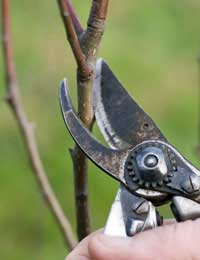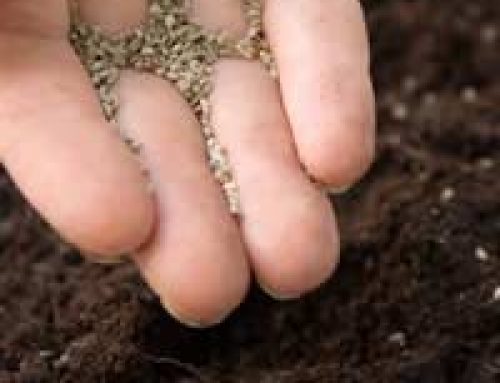
Pruning is a necessary part of maintaining an ordered and productive garden. Even if you’re going for a natural look, if you don’t prune then certain trees and plants will get very unruly and take over where you don’t want them to.
Overview of Pruning and Safety
Pruning can control the height and spread of trees and shrubs to stop them from dominating. In the case of fruit trees pruning also helps encourage fruit production and can make the harvest easier.
But pruning involves sharp tools to cut the branches off, potentially using ladders or stepladders to reach higher branches, and the disposal of the branches, many of them with sharp thorns or cut edges. Ladder safety and the use of secateurs and shears are covered in separate articles in the Garden Equipment section so in this article we’ll be concentrating on the possible dangers surrounding the act of pruning itself.
Dressing Safely While Pruning
The first step is to make sure that you are dressed correctly for pruning. If it’s a hot day then a hat is essential and it’s worth covering arms and legs too. If you don’t cover up, make sure that you are protected with sun screen.
It’s worth considering eye protection as well, particularly if you will be pruning something with sharp thorns or with branches that splinter when cut or bent.
To Cover Up or to Not Cover Up
Other precautions from thorny shrubs or trees are tough gloves and protective clothing to cover arms and legs, although some people prefer to keep their limbs bare while pruning. This is because clothing can get caught on thorns and other protuberances whereas skin doesn’t.
In addition, feeling the scratches makes you more aware and more careful, and they will heal, whereas clothing needs to be repaired. But on the other hand you can get skin irritations by being in contact with certain plants. There’s no right or wrong here, as long as you are aware of the risks, make the choice that you feel comfortable with.
Safe Branch Cutting Techniques
Be careful when pruning limbs or trees, particularly heavier ones and those high up. If necessary use rope slings to support branches while they are being cut and then lower them safely to the ground. Work in from the edge or a tree or shrub, cutting the smaller twigs and branches off, don’t be tempted to go for the big one all in one cut.
This is also a situation where eye-protection is more necessary. You are already going to be looking up to where you are cutting but if you hear something falling you’ll instantly look up to see what it is, and that’s when debris can get in the eye.
Take Care on the Way to the Dump
Disposing of the cuttings from a pruning session needs care too. If you are bagging them up to take them to a green waste disposal facility, be careful as you push them into the bag as supple limbs may spring back and catch you in the face.
Builder bags, the kind that gravel and other building materials are delivered in, are very useful for garden waste as they are tough and can take a lot of cuttings. But be careful not to fill them to the top as they will then be difficult to carry and lift into and out of a car, not to mention not fitting in the boot.
Enjoy Your Garden
Once you have finished pruning then the garden will look a lot neater and be ready for the summer. All you need to do is take a little care along the way to avoid accidents.





Leave A Comment